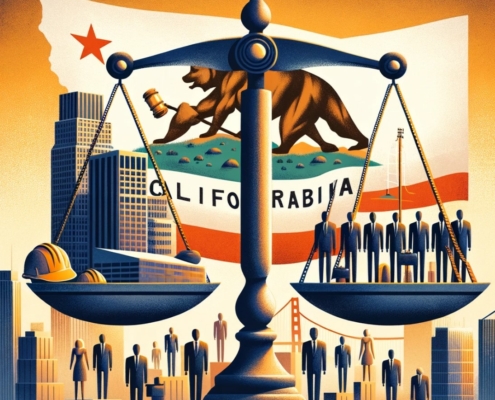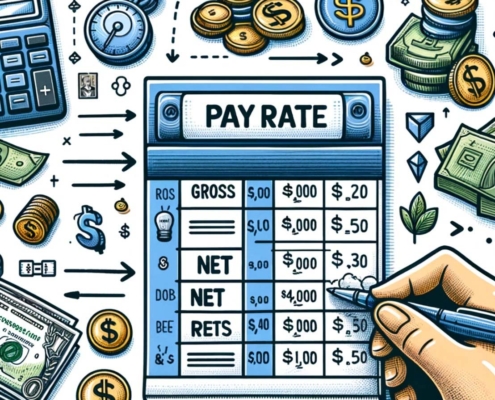Employee Relations: Tips and Strategies
Employee relations means interactions among employers and employees to build positive relationships and promote a sense of community within a company.
By Brad Nakase, Attorney
Email | Call (800) 484-4610
What is Human Resource Management?
Human Resource Management, known briefly as HRM, may be described as the practice of managing individuals within a company to achieve higher performance. For instance, if you hire employees for a business, you are searching for individuals who match the company culture. If they do, they will be more satisfied with their work, stay at the company longer, and be more productive than employees who do not mesh with the company culture.
Engagement is another example. Engaged workers display higher productivity, make customers happier, and offer work of higher quality. If Human Resources can identify ways of making workers more engaged, they can thereby help the company at large.
Human Resources is responsible for supplying the tools, knowledge, training, administration, legal advice, and talent management that is necessary to sustain and advance a business. Human Resource Management may be summed up as optimizing performance via better management of HR.
What is a human resource?
Human Resources are all the individuals that in some way contribute to a company with their labor. An HR department within a company often consult with an HR attorney such as Nakase Wade. These people form the business’ workforce. They might be normal employees, but they can also be contractors. Considering the recent growth of the gig economy, increasing numbers of people are working for a company on a contract basis without a traditional employment contract.
These individuals include workers offered by contract companies, independent contractors, temporary help workers, and on-call workers. An independent contractor may be contracted by a company for years, and an agency worker may perform labor for twenty separate companies in a single year. Since these individuals are involved in the business to a varying extent, the way the company deals with them should be different.
There is also the increase in robotization to consider. More and more, robots are involved in daily operations, meaning the interaction between machine and man is increasingly important to the success of a business. While machines are not viewed as human resources, there is an argument that they should be factored into the equation since they contribute to the workforce.
What are the basics of HR?
There are a few major elements that make up effective Human Resource management policies. These elements are:
- Performance management
- Recruitment and selection
- Learning and development
- Compensation and benefits
- Succession planning
- HR data and analytics
- Human Resources Information Systems
Let’s review each of the above categories.
Recruitment and Selection
It may be argued that recruitment and selection is the most visible element of Human Resources. After all, no one forgets their first interview. Identifying candidates and choosing the best ones to work for the company is a critical responsibility of HR. Workers are the lifeblood of the company, so finding the right people is a crucial task.
When a new job is established or an existing position opens up, the request for new employees begins. During the recruitment process, HR will utilize different selection methods to identify the best candidate for the job. These instruments include different assessments, interviews, and reference checks.
When there is a large number of candidates, HR may choose to use preselection tools. These instruments assist in identifying the best-suited individuals. Successful applicants move into the next round of interviews and in-depth assessments.
Performance management
When employees are brought on board, HR must then practice excellent performance management. This task involves helping employees reach their potential, which boosts the organization’s bottom line.
Typically, workers are given a defined list of responsibilities as part of their workload. Performance management provides the structure needed to give employees feedback on their work. This allows them to attain their best performance.
Example of performance management include 360-degree feedback, one-on-one performance reviews, and more informal feedback. Companies will typically participate in a yearly performance management cycle. This involves monitoring, planning, reviewing, and rewarding worker performance. The result of this cycle allows the company to group employees into the following categories: high vs. low performers and high vs. low potentials.
HR shares the responsibility of performance management with management. In this situation, the direct manager acts as the lead, with HR in a supporting role. Good performance management empowers employees, allowing them to reach their full potential. It also allows a company to improve its sustainability and efficiency, as well as its profit margin. Employees who do not perform at an acceptable standard may not be a good fit for a position, or a match for the company culture. In this case, these workers should be let go, to make room for better fits.
Learning and development
Individuals are shaped by their life experiences, including the country and area they grew up in, as well as a variety of cultural influences. Learning and development makes sure that workers are able to adapt to changes in technology, processes, and any legal or societal shifts.
Learning and development is meant to help workers learn and apply new skills and competencies. HR leads this effort, and good policies can help advance the company toward its long-term objectives. A current HR trend is incorporating learning opportunities into daily work and assisting employees with developing hard and soft skills that align with company goals.
Often, companies have established budgets for learning and development efforts. This budget is divided up among workers, with future leaders, trainees, and other high potential employees getting more opportunities to learn than others. People may come to an organization with different experience and knowledge. Learning and development efforts offer employees a way to fill gaps in skills and develop into potential leaders. The 9-box grid is a common framework used to link L&D with performance management. According to people’s potential and performance ratings, HR, along with managers, can form the appropriate development plans.
Succession planning
Succession planning is the responsibility of establishing back-up plans in the event key employees depart the company. For instance, if an important senior manager leaves their job, it is important to have a replacement at the ready who can maintain continuity and save the organization money.
Succession planning is usually dependent on L&D efforts and performance ratings. Together, these form a talent pipeline, or a collection of candidates who are qualified to fill high-up positions if someone leaves unexpectedly. Good people management involves growing and tending this pipeline.
Compensation and benefits
Good compensation and benefits are key factors in motivating and keeping employees. A primary HR responsibility is ensuring pay fairness and equity.
To attract the best talent, it is important to make the right offer of compensation. This should be balanced with the profit margins and budget of the organization. HR should keep track of pay increases and establish standards of merit. On occasion, HR may need to carry out a pay audit.
Compensation is comprised of primary and secondary compensation. Primary compensation refers to money directly paid for work, which usually includes the monthly salary and performance-based compensation.
Secondary compensation is made up of non-monetary benefits. These include flexible working times, pensions, extra holidays, daycare, a company laptop, and more.
The purpose of compensation is to reward employees in ways that motivate them.
Human resource information system
An HRIS is meant to support HR in performing the other HR basics. For instance, when it comes to recruitment and selection, HR professionals will use an Applicant Tracking System to monitor applicants and hires.
Similarly, a performance management system is meant to track employee goals and log performance ratings.
A Learning Management System is used to distribute content internally, while other HR systems monitor training approvals and the budget.
Compensation specialists utilize a payroll system to ensure employees are paid properly.
The HRIS can perform all these functionalities.
HR data and analytics
HR has recently made leaps and bounds when it comes to being more data-driven. The HRIS is essentially a data-entry system that permits HR to make more informed, better decisions.
You can use HR KPIS and metrics to keep track of important data. These measurements let management know how a company is doing in different areas. This is called HR reporting. It focuses on the past and current state of the company. With the help of HR analytics, HR can form predictions. Examples include employee turnover intention, workforce needs, and the impact of candidate experience on client satisfaction.
HR can make data-driven decisions by examining and measuring this data. Often, these decisions are less subjective, which makes it easier for management to support the decisions.
Have a quick question? We answered nearly 2000 FAQs.
See all blogs: Business | Corporate | Employment
Most recent blogs:
































